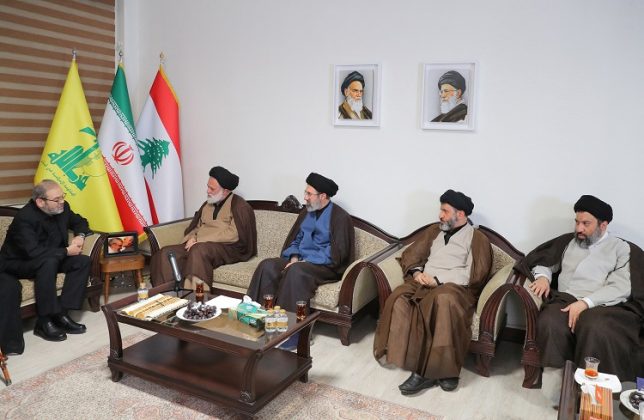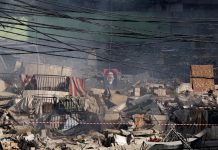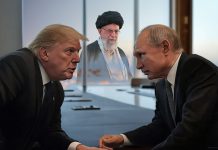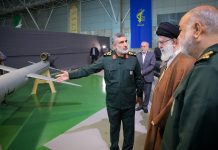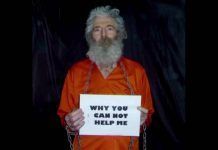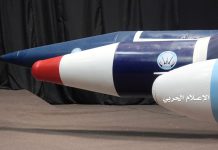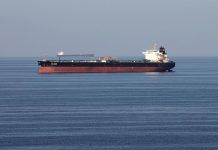March 28 (Reuters) – Israel struck Beirut’s southern suburbs on Friday for the first time since a cease fire with Lebanon’s Hezbollah in November that ended more than a year of fighting in parallel to the Gaza war.
Here are some key events.
2023:
Oct. 8 – Iran-backed Hezbollah starts firing rockets at Israeli military positions in support of its ally Hamas, a day after the Palestinian militant group led a wide-ranging attack on southern Israel.
Israeli airstrikes pound border areas of south Lebanon and attack sites in the Bekaa valley, while Hezbollah strikes northern Israel. Hezbollah says there will be no ceasefire with Israel until the war in Gaza ends.
In subsequent weeks, tens of thousands of people flee homes on both sides of the border. Both sides signal they do not want an escalation and keep exchanges mostly near the border area.
Nov. 24-Dec. 1 – Hostilities between Israeli forces and Hezbollah militants are paused during a week-long ceasefire in Gaza, then resume.
2024:
Jan. 2 – Hamas deputy leader Saleh al-Arouri is killed by a drone in Beirut in an attack widely attributed to Israel.
Jan. 8 – Israel kills top Hezbollah commander Wissam Tawil in a strike in south Lebanon. More than 130 Hezbollah fighters have been killed in hostilities since Oct. 7.
Jan. 9 – Hezbollah attacks an Israeli army base with explosive drones deployed from Lebanon in what it says is part of its response to Israeli assassinations in Lebanon.
July 27 – A strike on the Israeli-occupied Golan Heights kills 12 youths playing football in a Druze village. Israel accuses Hezbollah of the attack. Hezbollah says it struck military targets in nearby areas but denies killing the youngsters.
July 30 – Israel kills Fuad Shukr, a senior commander who helped Hezbollah expand from a Lebanese civil war militia to a major force in the Middle East, in a strike near Beirut.
Aug. 25 – Hezbollah launches hundreds of rockets and drones at Israel, in one of the biggest clashes in more than 10 months of border warfare, in reprisal for Shukr’s assassination.
Sept. 17 – At least nine people are killed and nearly 3,000 wounded when pagers used by Hezbollah members explode. Israel’s Mossad spy agency planted the explosives inside pagers ordered by Hezbollah months before, Lebanese sources say.
Sept. 23 – Israel dramatically intensifies its airstrikes across Lebanon, killing more than 550 people in a single day, according to Lebanon’s health ministry.
Sept. 27 – Israel kills Hezbollah leader Hassan Nasrallah, who led the group through decades of conflict with Israel, in an airstrike in Beirut.
Oct. 1 – The Israeli military says it begins “limited, localised and targeted ground raids” against Hezbollah in southern Lebanon villages close to the border. In subsequent days it tells residents of dozens of towns in southern Lebanon to evacuate.
Oct. 4 – Israel kills prominent Hezbollah official Hashem Safieddine, the presumed successor to Nasrallah, in an airstrike. Throughout October and November, airstrikes pummel Beirut’s Hezbollah-controlled southern suburbs, and areas in Lebanon’s south and east. Hezbollah keeps up rocket fire into Israel.
Nov. 23 – An Israeli airstrike kills 29 people in central Beirut, Lebanon’s health ministry says, in the deadliest strike on the heart of the capital since Israel began stepping up its assault on Hezbollah in September.
Another 13 people are killed in attacks on villages northeast of the capital in Baalbek district.
Nov. 27 – Israel and Hezbollah implement a ceasefire deal in which the group is to withdraw north of the Litani River, about 30km (20 miles) from the border, with the Lebanese army deploying in southern Lebanon. Israel is to withdraw troops within 60 days.
2025:
Jan. 25 – Israel says its forces will remain in southern Lebanon beyond the 60-day deadline, saying Lebanon had not yet fully enforced the ceasefire agreement. Hezbollah calls this an unacceptable breach.
Feb. 12 – Israeli television reports that the U.S., which mediated the ceasefire agreement, has authorised Israel to have a “long term” troop presence in southern Lebanon.
March 22 – Israel says it intercepts rockets fired from Lebanon and launches artillery and airstrikes at targets in southern Lebanon, killing at least eight people. Hezbollah denies responsibility for the rocket launches.
March 28 – Israel bombards southern Lebanon after saying it intercepted another rocket fired from the country, and carries out the first strike in Beirut’s southern suburbs since the ceasefire began.
ANALYSIS: Islamic Republic-Backed Hezbollah: What Weapons Does It Have?
(Compiled by Angus MacSwan and Reuters bureaus, Editing by William Maclean and Peter Graff)

